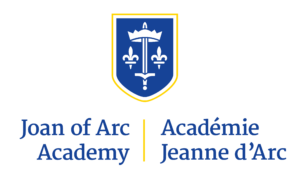Please ensure your project follows these rules...
- To be eligible to participate in the ORSF a student must be under 21 years of age, attending classes in a public, private or parochial school or its equivalent in the Region of Ottawa-Carleton, and in grades 7 – 12. Community College students and Vocational students are not eligible. The project must be the work of the student(s).
- A school may send a maximum of ten (10) projects per age category. For example, a high school (grade 9 through 12) may send a maximum of ten intermediate level and ten senior level projects, for a total of twenty projects. An elementary or intermediate school with grades 7 and 8 may send a maximum of ten projects to the Junior category.
- Group exhibits may be accepted with a maximum of two students and will be entered in the appropriate age category based on the school grade of the senior member of the group.
- To participate in the ORSF, the registrar must complete web based registration process, and submit the any applicable entry fee, before the deadline
- Junior (grades 7 and 8)
- Intermediate (grades 9 and 10)
- Senior (grades 11 and 12)
The ORSF has adopted the seven challenge awards (categories) used at the CWSF. These are used by the ORSF to assign judges and for Challenge awards, but within an age category all projects are judged against each other:
- Discovery — Create new fundamental knowledge based on your curiosity by asking a question and using the techniques of scientific inquiry to develop an answer.
- Energy — Improve our use of current energy sources, enable the transition to alternative energy sources, or reduce our energy footprint.
- Environment — Reduce our impact on, improve our understanding of, and ensure the quality of water air, soil, and the diversity of living things.
- Health — Increase our understanding of the human body, or apply science and technology to improve health, control disease, or support an aging population.
- Information — Enhance communication and our use of information using digital and networking technologies, or applications of new media.
- Innovation — Combine scientific principles with your creativity to develop a new material, structure, device, or system to solve a problem or improve an existing solution.
- Resources — Develop better ways to use our natural resources that provide sustainable sources of food, products, or prosperity.
During registration, participants will identify the “challenge” best addressed by their project.
Challenge Awards are provided to the top projects within a challenge topic. Challenge Category winners will be provided with a certificate and $100 cash award. In the event of low numbers of projects in certain age groups, challenge award categories may be combined at the discretion of the judges.
The ORSF is governed by the Policies of Youth Science Canada (YSC) that have been developed for the Canada Wide Science Fair (CWSF). In particular, participants in the ORSF must comply with the following ethical and safety policies.
In particular note that any project involving humans or animal participation in any way must be pre-approved by the ORSF Committee, using the appropriate forms and instructions from YSC. Please remember to complete all applicable ethics and safety forms.
The safety of ORSF participants and visitors is critical to the success of the fair. Every effort has been made to keep the number of safety rules and regulations to a reasonable level. However, appropriate precautions must be taken to minimize the possibility of personal injury and property damage.
Check-in, Setup and Rules and Safety Inspection
Each exhibitor participating in the ORSF will set up and remove his/her exhibit during the respective times allowed on the Schedule of Events. Before the Rules and Safety Inspection can begin every component of the display must be in-place.
Failure to complete check-in, set-up and receive a Rules and Safety Inspection during this period may result in a minimum penalty of the loss of all visual presentation marks and the project may not be judged at all.
No item(s) should be removed from the display until the closing of the Fair on Saturday late morning. The exhibit area is secured overnight but the ORSF will not be liable for equipment loss or damage. Preliminary judging of projects and displays begins at noon of the first day of the Fair. Students are not allowed to re-enter until 1pm.
All exhibits must be dismantled and removed before the start of the Awards Ceremony on the second day of the Fair.
Following set-up of an exhibit, the project must pass a Rules and Safety Inspection. Failure to meet the rules or correct safety violations will result in disqualification.
Exhibit and Display Requirements
Backboards, title boards, presentation and prop material and all display equipment must fit entirely within the following dimensions and restrictions: 1.2 m wide, 0.8m deep and 3.5 m high from the floor. No portion of the display shall project into any aisle. All measurements will be made from the outermost points including framework and appendages and will be checked as part of the Rules and Safety Inspection.
Moving exhibits (e.g., radio-controlled vehicles, robots) shall be restricted to the regulation display space. The ORSF Committee may, at its discretion, provide an area to safely demonstrate projects that require more than the regulation display space.
Special permission must be obtained for oversized exhibits during the registration process. Exhibits not receiving this prior approval may be disqualified.
Presentation information, including outlines, borders and decorative elements must be attached to the backboard material so that all edges are securely fastened.
Papers presented on the exhibit table must be secured in a binder, Duo-tang, presentation folder, plastic sleeve or other appropriate enclosure.
All equipment must be supplied by the exhibitor. Note that display tables will be provided.
A single 110 volt 60 cycle outlet will be provided within 10 feet but exhibitors must bring a short extension cord to reach the outlet. Note that no gas, water or phone outlets will be provided.
Structural and Mechanical Safety
Exhibits must be sturdy, self-supporting and sufficiently stable to prevent accidental tipping. Moving parts must be firmly attached.
Sharp edges or corners of prisms, mirrors, enclosures and glass or metal plates that may be contacted by the public must be removed or protected to prevent injury.Dangerous moving parts, such as belts, gears, pulleys and blades, must be provided with a guard to prevent access to the moving parts.
Compressed gas cylinders shall not be displayed.
Electrical Safety
All extension cords, power bars and lighting must be CSA approved.
Electrical devices constructed by finalists must comply with the following requirements to be approved for display. As they cannot be CSA approved, these devices may only be connected and operated during judging.
Electrical devices must be protected by a non-combustible enclosure.
An insulating grommet is required at the point where electrical service enters an enclosure.
Electrical devices shall use as low a voltage as possible.
The electric current must be limited so as not to cause any danger or discomfort if the terminals are touched.
A pilot light must be used to indicate when power is on.
Fire Safety
Operation of an open flame, candle, torch or any other heating device is not permitted.
Chemical Safety
Flammable, toxic or dangerous chemicals, prescription drugs and over-the-counter medications shall not be displayed.
Photographs or empty packages of prohibited materials may be displayed.
The display of chemicals is discouraged; however, other substances can be used to simulate chemicals for display purposes. Table salt can be used to simulate many chemicals, such as ammonium nitrate. Water can represent alcohol, ether and many other liquids. Molasses can be used to simulate petroleum products.
When chemicals are simulated, they should be identified with the name of the substance they represent, preceded by the word “simulated.” Any WHMIS labels (supplier or workplace) should be attached to show understanding of safe work practices.
The total quantity of liquids displayed at a project shall not exceed 1 litre. Photographs and/or video should be used to demonstrate processes requiring larger quantities of liquid.
Bio-hazards
The following materials shall not be displayed:
- Biological toxins
- Cell or tissue samples including blood and blood products, except on sealed microscope slides, which may be displayed
- Cultures – photographs or simulated cultures may be used.
- Plants or plant tissue and soil may be displayed if they are enclosed in a rigid, air tight container.
Animals
Project displays with live animals are not permitted. Vertebrate animals (birds, fish, mammals, reptiles, amphibians) are not to be used in any active experiments which may in any way affect the health, comfort or physical integrity of the animals. Observation of wild animals, animals in zoological parks, farm animals and pets is permitted.
Lower orders of life (bacteria, fungi, protozoa, insects, plants and invertebrate animals) can be used in experimentation to reveal valuable biological information relevant to the higher orders. These life forms are not to be included in the project display and should be replaced by appropriate photographs.
Hazardous materials and Equipment
X-ray or hazardous radiation-producing equipment may be displayed but must not be operated at any time.
Radioisotopes or compounds containing radioisotopes at activities above normal background shall not be displayed.
General
No participant may display or discuss any previously won awards for their project (such as that received by the project at the school science fair). Patents and patent applications may be displayed.
Exhibitors are responsible for their behavior at the ORSF. A participant must be at his/her display at all times during exhibition hours. All interaction with other participants and the public should be respectful and courteous. Use of radios or MP3 players is discouraged in order to improve accessibility of the exhibits to the judges and public. All participants must leave the exhibit area during the lunch break. No food is provided by the ORSF committee.
All participants must wear the provided ORSF T-shirt (or in the case of no T-shirts being provided at the Fair, an ORSF identification badge), at all times during the Fair day. This allows judges, University staff and security, and the ORSF committee members to identify the participants.
Thank you to our sponsors!
Titanium
Platinum
Gold
Silver
Special Mentions
The Graham Family Foundation
Anonymous Donor







